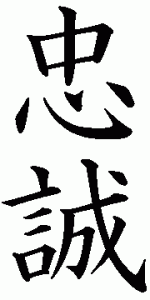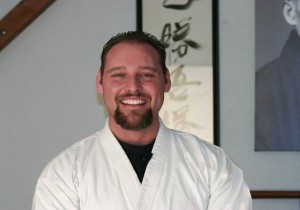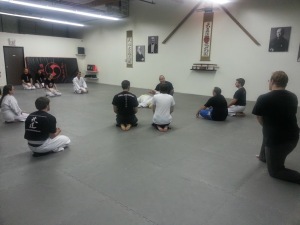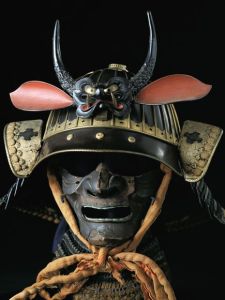Chugi – Loyalty in Japanese Martial Arts
Chu (Chugi) | Duty and Loyalty – The warrior knows that s/he is accountable for their actions and words and accepts all consequences that may result from them. The warrior is intensely loyal to those s/he is responsible to and those s/he is responsible for. Trust and unity are the backbone of what Bushido represents.
Chu is a very typical and important rule for any person among the traditional Japanese martial arts world/ society. There is no equivalent word in English that truly captures the meaning of this type of fidelity between the student and teacher of Budo. For a non-Japanese speaker, to truly grasp its meaning, he/she has to deeply understand the uniqueness of Japanese culture.
The pursuit of duty, justice and correct action, is the best way to conceptualize this character trait. As a teacher of Budo (martial arts and disciplines), I chose this typical term within the traditional Japanese culture to show the beauty, the educational values and the benefits of understanding and following the rules of Chu.
Joining an authentic Dojo or school of martial arts such as the Budo Shingikan implies much more than taking an ordinary course. A serious Budoka (martial art student or practitioner) should know the tradition of Japanese martial arts and specifically that of Bushin Ryu, our history and heritage, and especially, the goals, disciplines and expectations.
In classical Japan, learning a martial art was a sole privilege for the warrior class. Each martial art school not only kept its techniques, strategy, and knowledge jealously secret, but was also strict about accepting students. It was impossible for any student to be accepted into a Dojo unless s/he was strongly recommended as a serious and good-natured person, worthy of becoming a member of that school. Now days, almost any school of martial arts all over the world is open to anybody. Many of them became extremely commercialized, concentrating in the physical parts only, abandoning the tradition, neglecting the mental, moral, and spiritual training and hardly dealing with the education of the individual. The Budo Shingikan Dojo has not done this and none of the Bushin Ryu schools will. I mostly blame the Budo teachers, product of the present world, of the social and educational systems in which they have almost lost all ideals and values or have been willing to compromise those for financial gain. Even in Japan, only few classical schools still keep that tradition and the quality of Chu is slowly dying, hence why I am so adamant about keeping these traditions in our schools.
There are many schools which have their regulations written and displayed on their walls at the Dojo, or printed on paper for newly arriving students to receive upon joining the school. But there is nothing more important than the instructor teaching and educating, and above all his teaching through personal example. If the teacher goes into this relationship giving, then the student must mirror and match this behavior.
I remember in my youth that among the most valued and respected profession was the teacher. Now-a-days, to become a teacher is not a profession young men or women desire. Very few idealists, good and dedicated teachers still continue today, swimming against the current to fulfill the important mission of teaching and educating. There is a lack of appreciation and respect by society which mostly bows to richness, but not to the true quality of the person or the importance the teacher has in bringing up the new generations. In martial arts it goes even further in which students make a very big mistake and that is they treat quality teachers as if there are no differences. As if their education and by extension their teacher is a commodity, and they can get what they want anywhere, in fact they can get it cheaper, with no attachment or relationship what-so-ever. These days are sad.
A real teacher of Budo is not a lecturer that passes information to his students. He teaches knowledge, passing long years of wisdom educating his students, strengthening and polishing them to become not only warriors but also better people which can confront the difficulties of life not only with strength but with wisdom which will enrich their life and also contribute to society.
The teacher gives himself and all his love to his students, treating them as if they were his own family, strictly, jealously, but also with proudness and love. Now the questions are do students understand what is expected from them? Do they return this relationship? Do they see the value in this sincere way of being? In my opinion, very little value sincerity or a truthful relationship with a teacher.
When I was a younger teacher, I remember many times when other students of Budo came to visit and asked to join my Dojo, I would always ask them whether their teacher knew they had come and if they had permission to learn here. When the answer was no, it showed me how little respect they had for their teacher. My answer was always no, they could not train with me, after all if this is how you treat your teacher it is only a matter of time before you treat me the same. The student shouldn’t have even talked to me without the permission of his/her teacher as it put both him and I in an awkward position. Few students these days think before action. Even talking to another teacher, school or organization without explicit consent from your teacher is a big no-no and shows that you are not a true student of Budo or understand what Bushido represents.
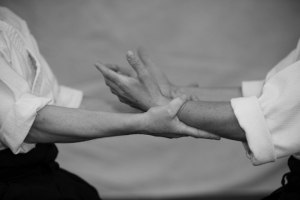 It is unquestionable that a serious student of Budo will not act without his teacher’s approval in any matters that concern Budo. This is an unwritten rule which comes with the study of Budo and belongs to a serious Dojo and is based on the two basic principles of Bushido, (the ethical code of the Samurai), loyalty and honor.
It is unquestionable that a serious student of Budo will not act without his teacher’s approval in any matters that concern Budo. This is an unwritten rule which comes with the study of Budo and belongs to a serious Dojo and is based on the two basic principles of Bushido, (the ethical code of the Samurai), loyalty and honor.
I have never considered myself as an ideal person or perfect Budoka and I have probably made all the mistakes that can be made and will surely make more in the future. What I do know is that each time I have made a mistake, not only could I not sleep several nights, but I still continue to carry the burden of my actions. However the outcome of it was my growth, not repeating those mistakes and becoming a better person. And in turn using my position as a Sensei, a teacher to educate my students and show them the right path. In many western countries especially the United States, educating people is a rather difficult task. Each one is a small General, each one thinks s/he is cleverer and knows better than anybody else. Many of them are “rebels” who believe protocol and tradition are irrelevant in our modern world and what can be more difficult for a teacher is that they are not disciplined individuals and working with them is almost a daily fight.
We can easily pre-frame the context of education as a Budoka simply by asking this question, “What is really important here as a student?” Having a genuine relationship with your teacher and gaining the respect of your teacher by showing fidelity and doing the right thing. After all if you have a sincere teacher he or she deserves that level of respect anyway. The alternative is that of rebelling and losing that respect and relationship forever. This is a two way street and must be reciprocated on both sides to be genuine.
The meaning of Chugi has universal importance not only among the traditional Japanese martial arts, but also to any person that wants the world to become a better place to live in, a healthier society, and to personally walk high, with dignity and self-respect with the knowledge of acting righteously. Acting right and paying respect should be done in the right measurement. The student-teacher relationship may be defined as the one who gives and the one who receives. Respect is the very fundamental basic rule in any martial art as well as in any kind of relation in society. It is, maybe, the highest and the most important principle in human life.
Today you are the child, but tomorrow you will be the parent. Right now you are a student of Budo, but later on you will be the teacher. Respecting others is respecting yourself. Doing the right thing is walking all your life with proudness and not with shame. Being a noble person with high self-esteem and admired by all.
In Oneness,
Sensei

